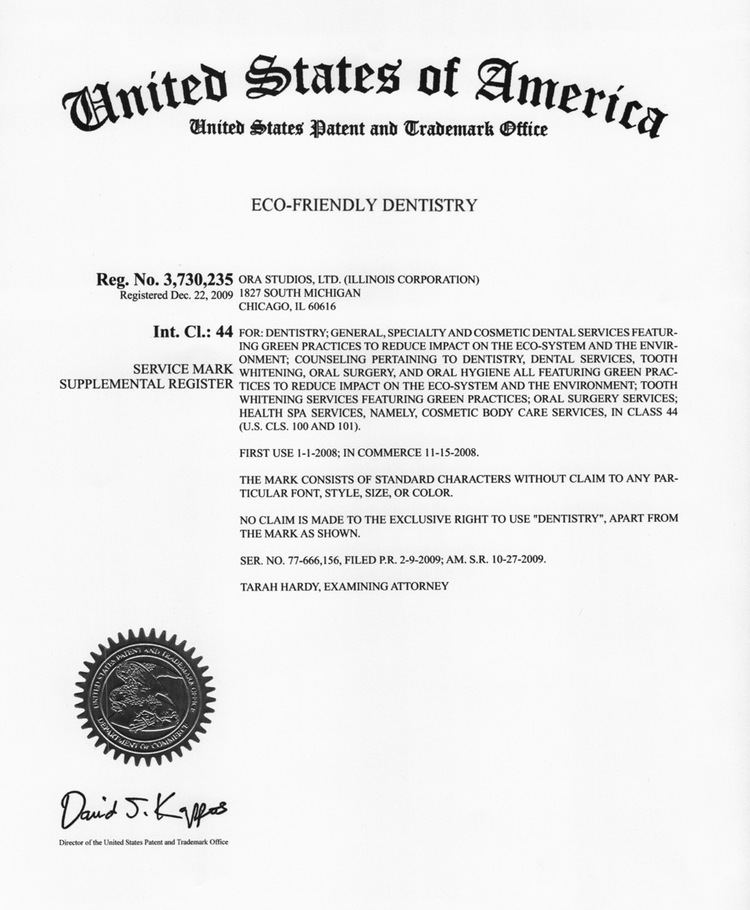 | ||
Eco-friendly dentistry is defined by various dentists and dental organizations and primarily consists of general dentistry, oral surgery and other specialty dental services featuring green practices to reduce impact on the eco-system, the environment and patient treatment practices.
Contents
Overview
The first international reference to eco-friendly dentistry® was published in a University of Waterloo study by Dr. Ali Farahani and Mittale Suchak on April 3, 2007. In their study, they defined eco-friendly dentistry® as an "approach to dentistry that implements sustainable practices by keeping resource consumption in line with nature's economy, by safeguarding the external environment by virtue of eliminating or reducing outgoing wastes and by promoting the well-being of all those in the clinical environment by conscious reduction of the chemicals in the breathable air."
On December 22, 2009, Dr. Steven Koos, DDS, MD trademarked and officially defined eco-friendly dentistry® in the United States as a newly evolving practice of dentistry, which encompasses a simultaneous devotion to sustainability, prevention, precaution, and a minimally invasive patient-centric as well as global-centric treatment philosophy. Eco-friendly dentistry®, through green design and operations, protects the immediate health of patients and team members, protects the health of the surrounding community, and protects the health of the global community and natural resources. Eco-friendly dentistry® includes environmental consideration in medical facilities materials, medical waste management and patient treatment techniques and materials.
Eco-friendly dentistry® is often used synonymously with the term green dentistry.
Green Dentistry has been defined by the Eco Dentistry Association as "a high-tech approach that reduces the environmental impact of dental practices and encompasses a service model for dentistry that supports and maintains wellness."
History
In 2008, the Eco Dentistry Association was co-founded by Dr. Fred Pockrass and his wife, Ina Pockrass. The Eco-Dentistry Association (EDA) provides "education, standards and connection" to patients and dentists who practice green dentistry. The EDA aims to help dentists "come up with safe and reusable alternatives that lower a dentists' operating cost by replacing paper with digital media whenever possible." As of February, 2011, the EDA has approximately 600 members.
After the inception of the EDA, the dental industry saw more dentists and oral surgeons choosing to make their offices environmentally friendly.
Mint Dental Works in Portland, Oregon was the first LEED-approved and certifiably green dental office in the United States.
Also in 2008, Dr. Steven Koos, DDS, MD established the United States’ first fully green oral surgery facility in Chicago, Illinois, ORA® Oral Surgery & Implant Studio, focusing on sustainability and the practice of eco-friendly dentistry®. Dr. Koos is a dual-degree Chicago oral and maxillofacial surgeon and is an advisory board member for the Eco Dentistry Association and a contributing member of the Council for Environmentally Responsible Surgery with Practice Greenhealth.
Elements of eco-friendly dentistry
Specific elements in office and building construction, office operations and patient practices distinguish the practice of eco-friendly dentistry in comparison to traditional dentistry.
